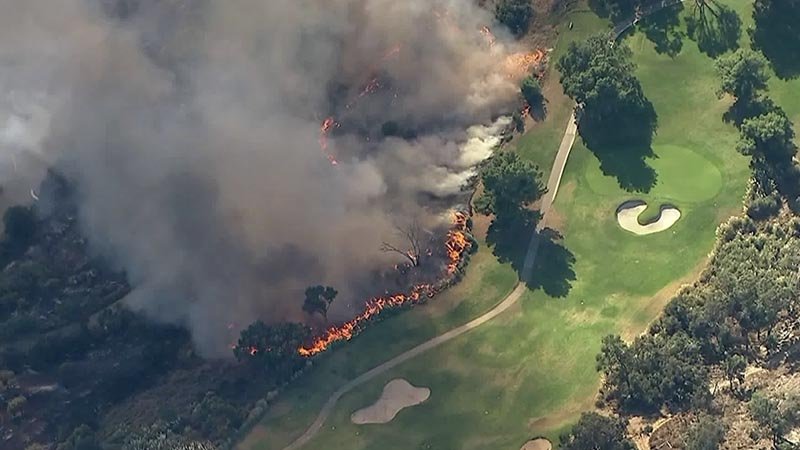
Two years removed from one of the worst droughts in history in California, a month without rain and wildfires demanding time on TV news throughout parts of the state, some might believe another prolonged dry spell is in the offing.
That would be a mistake, say two of California's foremost authorities on water and golf and how the two mesh.
"What the weather is like in November doesn't preface anything," said Craig Kessler, director of governmental affairs for the Southern California Golf Association, and one of the state's leading water experts. "Some of the wettest years here, El Nino years, have been preceded by dry Novembers and Decembers.
"You want to start paying attention in January, February and March. That is the rainy season here. Those 13 weeks are the gold standard."
According to the National Weather Service, about 14 inches of rain has fallen in the Los Angeles area. That's about 3 inches more than the historic average.
The area has received less than an inch since June. That includes no rain throughout Los Angeles County, where the average rainfall for the month ranges from one-half inch to an inch throughout the county that covers 4,700 square miles.
"Is this a sign of the next drought? Nothing is predictable here in November," said Mike Huck, an irrigation consultant and an expert on California golf's water issues. "In fact, this is the most cool and mild summer I can recall, and I've lived here since the late ‘80s.
"The superintendents I've talked to have said this is the best summer they've ever had."
Is this a sign of the next drought? Nothing is predictable here in November.
About one-fifth of the state, all a corridor hugging California's southwestern border with Nevada and Arizona, have been officially labeled as abnormally dry or in moderate drought, according to the U.S. Drought Monitor.
The dry conditions throughout southern California and on the state's eastern edge are not cause for alarm, Kessler said.
"Why aren't we concerned that there was zero rain in October? It's often zero," Kessler said. "Those other areas are high in the mountains where it is normally snowing now. Early snows often melt, and that precipitation is lost. What we need are the late snows in January and February when it's too cold for it to melt."
That snow in the higher elevations throughout the winter provides much of the water needed for California's 39 million residents through a storage and delivery system of reservoirs and aqueducts known as the State Water Project.
According to the California Department of Water Resources, 10 of the state's 12 major reservoirs are at 51 percent to 84 percent of capacity. The other two are at 41 percent and 45 percent of capacity.
"Those early snows are often followed by warm air, then it melts and we lose the ability to capture it," said Huck, a former golf course superintendent and USGA Green Section agronomist and the recipient of this year's USGA Green Section Award. "Snow during the winter is our slow-release water source."
So then what's with all those wildfires?
Blame it partly on nearly 14 inches of rain falling throughout the area during last winter's rainy season that brought a flush of new growth, followed by six months of virtually no rain and regularly occurring hot and dry Santa Ana winds that fan the flames, says Kessler.
"Last year was very wet, so there was a lot of growth, a lot of brush. Then there was a long dry season, and no rain in October, which is the normal course of business this time of year," Kessler said.
"A lot of that growth dried up. When you have low humidity and high winds, it's like a tinderbox."

